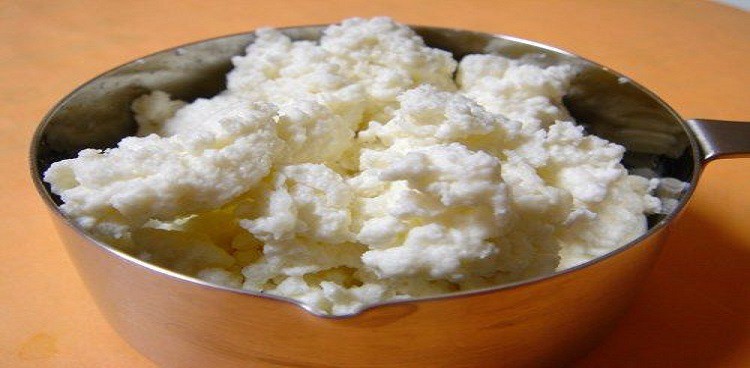
Cheesemaking is a time-tested and aged art, but the process is only half of the story! The history of cheese is not quite as simple as you might think, and it can connect us back to some of the most iconic figures of the past. From politicians to pop stars, join culture intern Emily as she dives into history and learns about the cheese culture during the life and times of some of America’s most famous faces. Last week we learned how Shirley Temple and Kraft mac & cheese stole America’s heart. This week we’re taking a closer look at the role of cottage cheese in the US rationing program of WWII.
Alongside the commanding image of Uncle Sam, Rosie the Riveter is perhaps one of the most recognizable symbols in American culture. With a face as pretty as those of classic 1940s era pin-up illustrations, Rosie the Riveter’s rolled up sleeves and determined stance embodied what it meant to be an American woman during World War II. As the escalating war called men away to battle, women were left with the equally important task of defending the home-front by joining the workforce. By 1945, one out of every four married women worked outside of the home in production jobs that had previously been held by men. In war-related industries, such aircraft manufacturing, the number of working women spiked from 1% to 65%. The Rosie the Riveter campaign was an incredibly successful recruitment strategy of the WWII era, and an overwhelming number of women enthusiastically enlisted to do their part.

Photo Credit: wikipedia.com
In addition to making up a large portion of the labor force, women also played a significant role in other wartime campaigns that affected the lives of Americans at home. Food and supply rationing began in the early 1940s, and was an essential (albeit difficult) way of life during the war years. Operating under the guidelines of “Use it Up, Wear it Out, Make it Do, or Do Without,” American families were asked to ration many commonly used items so that troops had access to enough life-saving and nutritional resources. Along with meat and sugar, cheese was one of the first food items to be listed as a rationed food source. Supplies of hard cheeses were sent to troops because it was easy to preserve during travel, and subsequent cheese and dairy supplies became a priority for servicemen because it was a vital source of protein. Back home, Americans were encouraged to eat cottage cheese rather than more-expensive and less-available meat.

Photo Credit: amazon.com
It was also during this period that cheeses we consider to be “processed” rose in popularity. This was due largely to ease of production and limited use of essential dairy ingredients. Although it had long been considered a budget-friendly food item, during the WWII era Velveeta cheese proved itself to be a particularly ideal recipe because it did not require very much milk for production. Marketed as a healthy source of calcium when milk was not readily available, Velveeta was the perfect cheese substitute for a family that was trying to live under the strict regulations of food rationing. Coupled with meals that consisted of cottage cheese as a major protein source, the dinner plate of Americans during WWII had the potential for being exceptionally cheesy.
Comments:
Cottage cheese has long been a popular and relatively cheap dairy ingredient, making it perfect for times of economic hardship. Perhaps one of the most iconic “vintage” uses of cottage cheese is the jello salad, which utilized inexpensive pantry items like gelatin and canned fruits. What are some ways that you enjoy eating cottage cheese? Share your answer in the comments section, and you can win a free issue of our latest print edition! Comments must be posted by Tuesday, November 11, 2014 to be eligible to win. Winners must be located in the continental US. Good luck!
Photo Credit: Featured image courtesy of pixgood.com



I was a small child at that time, but remember getting exposed to a lot of cottage cheese, and little exposure to hard cheeses. As a result, I would not eat hard cheeses when offered. Ironically, I became a food science professor, worked on cheese ripening during my career, and have also been a cheese judge. In the spirit of my judging background, I will say that the picture in the article is some pretty bad looking cottage cheese (probably a function of the picture, rather than the product).
Hi Ron,
Thanks for sharing your interesting experience about growing up with cottage cheese! And your professional critique is much appreciated. I agree, sometimes the real-life deliciousness of a cheese is difficult to transfer from plate to picture!
Hi There
I grew up in the U.K and I remember most people who ate cottage cheese would simply season it with salt and pepper. For picnics and special lunches we would also add small shrimps and lemon juice, but it wasn’t something we had on a regular basis.
Hi Angel,
Simple salt and pepper is a great way to enjoy cottage cheese, and a personal favorite of mine, too! Thanks for sharing the shrimp and lemon idea; I’ve never heard of that before, and will have to remember to try that during picnic season!